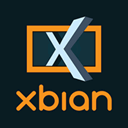Uncovering the Best Raspbmc Alternative for Your Raspberry Pi Media Center
Raspbmc, a minimal Linux distribution built on Debian, has long been a popular choice for transforming your Raspberry Pi into a powerful Kodi media center. Its excellent form factor and sufficient power for media playback made it an ideal, low-cost HTPC component, offering the full XBMC experience previously found on much more expensive platforms. However, as technology evolves, so do the options available. If you're looking for a new or updated solution, exploring a robust Raspbmc alternative is essential to keep your media setup running optimally.
Top Raspbmc Alternatives
While Raspbmc served its purpose admirably, several modern alternatives offer enhanced features, better support, and continued development. Here are some of the leading contenders to consider for your Raspberry Pi media center needs.

OSMC
OSMC (Open Source Media Center) is a free and open-source Linux-based media player founded in 2014, making it a direct and excellent Raspbmc alternative. It allows you to play media from your local network, attached storage, and more. Available for Raspberry Pi and Apple TV, OSMC boasts features like an operating system, auto-identifies videos, is based on Debian, designed for TVs, Momentjs integration, a music player, and the ability to stream video to Apple TV.

OpenELEC
Open Embedded Linux Entertainment Center (OpenELEC) is a small, Linux-based Just Enough Operating System (JeOS) built from scratch to turn your computer into a media center. As a free and open-source platform available for Linux and Raspberry Pi, OpenELEC is a strong Raspbmc alternative, offering features like extensibility by plugins/extensions, support for IPTV, a music player, OPENGL support, its own operating system, Python compatibility, and TV show management.

Fedberry
FedBerry is a Fedora Remix specifically built for use with Raspberry Pi 2/3 Model B computers. As a free and open-source Linux distribution, it offers a solid Raspbmc alternative for users who prefer a Fedora-based system. Its core features include being based on Fedora and specifically designed for Single Board Computers, making it a tailored solution for Raspberry Pi enthusiasts.

Easy-Data Mediacenter
Easy-Data Mediacenter is a free video and audio player with a comprehensive suite of tools. While primarily a Windows platform, it can serve as a media center component, offering bit-perfect audio without external codecs. Its features include batch renaming files, a built-in media converter, capturing images from video, creating playlists, portability, screen recording, screenshot tools, and video editing capabilities, providing a robust media management experience.

MythTV
MythTV is a free, open-source media center and digital video recorder (DVR) distributed under the GNU GPL. Available across Mac, Windows, and Linux, it offers a comprehensive media solution. While not specific to Raspberry Pi, its powerful DVR functionality and plugin architecture make it a versatile option for those building a more expansive home media system, distinguishing it from simpler Raspbmc alternatives.

XBian
XBian is a small, fast, and lightweight media center distribution designed for devices like the Raspberry Pi, CuBox-i, and Hummingboard. Based on a minimal Debian installation, XBian is a free and open-source Linux-based platform that offers live updating, making it a highly competitive Raspbmc alternative for users seeking ongoing support and performance improvements on their single-board computers.
With a variety of powerful and feature-rich options available, finding the ideal Raspbmc alternative for your Raspberry Pi media center has never been easier. Whether you prioritize a lean operating system, extensive media management tools, or specific hardware compatibility, exploring these alternatives will help you discover the perfect fit for your home entertainment needs.